T Raudsepp
A 4,103 marker integrated physical and comparative map of the horse genome
Raudsepp, T; Gustafson-Seabury, A; Durkin, K; Wagner, M L; Goh, G; Seabury, C M; Brinkmeyer-Langford, C; Lee, E J; Agarwala, R; Stallknecht-Rice, E; Schaffer, A A; Skow, L C; Tozaki, T; Yasue, H; Penedo, M C T; Lyons, LA; Khazanehdari, K A; Binns, M M; MacLeod, J N; Distl, O; Guerin, G; Leeb, T; Mickelson, J R; Chowdhary, B P
Authors
A Gustafson-Seabury
K Durkin
M L Wagner
G Goh
C M Seabury
C Brinkmeyer-Langford
E J Lee
R Agarwala
E Stallknecht-Rice
A A Schaffer
L C Skow
T Tozaki
H Yasue
M C T Penedo
LA Lyons
K A Khazanehdari
M M Binns
J N MacLeod
O Distl
G Guerin
T Leeb
J R Mickelson
B P Chowdhary
Abstract
A comprehensive second-generation whole genome radiation hybrid (RH II), cytogenetic and comparative map of the horse genome (2n = 64) has been developed using the 5000rad horse X hamster radiation hybrid panel and fluorescence in situ hybridization (FISH). The map contains 4,103 markers (3,816 RH; 1,144 FISH) assigned to all 31 pairs of autosomes and the X chromosome. The RH maps of individual chromosomes are anchored and oriented using 857 cytogenetic markers. The overall resolution of the map is one marker per 775 kilobase pairs (kb), which represents a more than five-fold improvement over the first-generation map. The RH II incorporates 920 markers shared jointly with the two recently reported meiotic maps. Consequently the two maps were aligned with the RH II maps of individual autosomes and the X chromosome. Additionally, a comparative map of the horse genome was generated by connecting 1,904 loci on the horse map with genome sequences available for eight diverse vertebrates to highlight regions of evolutionarily conserved syntenies, linkages, and chromosomal breakpoints. The integrated map thus obtained presents the most comprehensive information on the physical and comparative organization of the equine genome and will assist future assemblies of whole genome BAC fingerprint maps and the genome sequence. It will also serve as a tool to identify genes governing health, disease and performance traits in horses and assist us in understanding the evolution of the equine genome in relation to other species. Copyright (C) 2008 S. Karger AG, Basel
Citation
Raudsepp, T., Gustafson-Seabury, A., Durkin, K., Wagner, M. L., Goh, G., Seabury, C. M., Brinkmeyer-Langford, C., Lee, E. J., Agarwala, R., Stallknecht-Rice, E., Schaffer, A. A., Skow, L. C., Tozaki, T., Yasue, H., Penedo, M. C. T., Lyons, L., Khazanehdari, K. A., Binns, M. M., MacLeod, J. N., Distl, O., …Chowdhary, B. P. A 4,103 marker integrated physical and comparative map of the horse genome. Cytogenetic and Genome Research, 122(1), 28-36. https://doi.org/10.1159/000151313
| Journal Article Type | Article |
|---|---|
| Deposit Date | Nov 11, 2014 |
| Journal | Cytogenetic and Genome Research |
| Print ISSN | 1424-8581 |
| Electronic ISSN | 1424-859X |
| Publisher | Karger Publishers |
| Volume | 122 |
| Issue | 1 |
| Pages | 28-36 |
| DOI | https://doi.org/10.1159/000151313 |
| Public URL | https://rvc-repository.worktribe.com/output/1430692 |
| Additional Information | Corporate Creators : Bern, Switzerland, California Davis, Cent Vet Res Lab, Dubai, Hannover School Vet Med, INRA, France, Kentucky, Lab Racing Chem, Japan, Minnesota, USA, Natl Inst Agrobiol Sci, NCBI, USA, Texas A&M |
Downloadable Citations
About RVC Repository
Administrator e-mail: publicationsrepos@rvc.ac.uk
This application uses the following open-source libraries:
SheetJS Community Edition
Apache License Version 2.0 (http://www.apache.org/licenses/)
PDF.js
Apache License Version 2.0 (http://www.apache.org/licenses/)
Font Awesome
SIL OFL 1.1 (http://scripts.sil.org/OFL)
MIT License (http://opensource.org/licenses/mit-license.html)
CC BY 3.0 ( http://creativecommons.org/licenses/by/3.0/)
Powered by Worktribe © 2025
Advanced Search
